


Experiments with electromagnets
Floating Tube
Description:
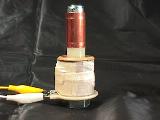
This shows another example of Lenz's law, where the magnetic field is changing due to the AC voltage applied to the coil, and the section of copper tubing is caused to levitate on the bolt.
Construction:
The construction is the same as the AC electromagnet. The only additional piece of hardware needed is a section of copper tubing or pipe.
Demonstration:

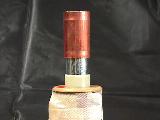

With the short section of copper tube in place on the end of the bolt, turn up the variac supplying ac power to the coil. What you will see the copper tube begin to float up the bolt! Try pushing it down. Try cranking up the voltage on the coil (take care not to exceed the rating of the coil!).
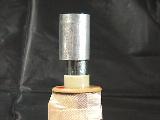
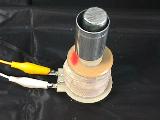
Next, try the same thing with a section of aluminum tubing. How does it behave? Does it float higher with the same voltage on the coil?
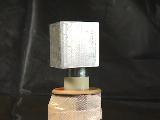
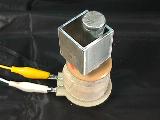
For some more fun, try the same thing again with a section of square aluminum tubing. It's amazing how electrons can zip around corners just about as easily as it can go in circles!
Three more experiments.
Conclusions:
The tube will float because of eddy currents created by the changing magnetic field from the coil. The polarity of the eddy current fields will be the opposite polarity (creating a North pole at the bottom of the tube when there is a North pole at the top of the coil, and vice versa) as the polarity of the coil, causing a repulsion between the two.
The section of tubing with the slit will not float because there is an incomplete circuit for the eddy currents, so no induced magnetic field is created.
With DC on the coil, nothing will happen because the magnetic field is not changing, so no eddy currents are induced in the section of tubing.